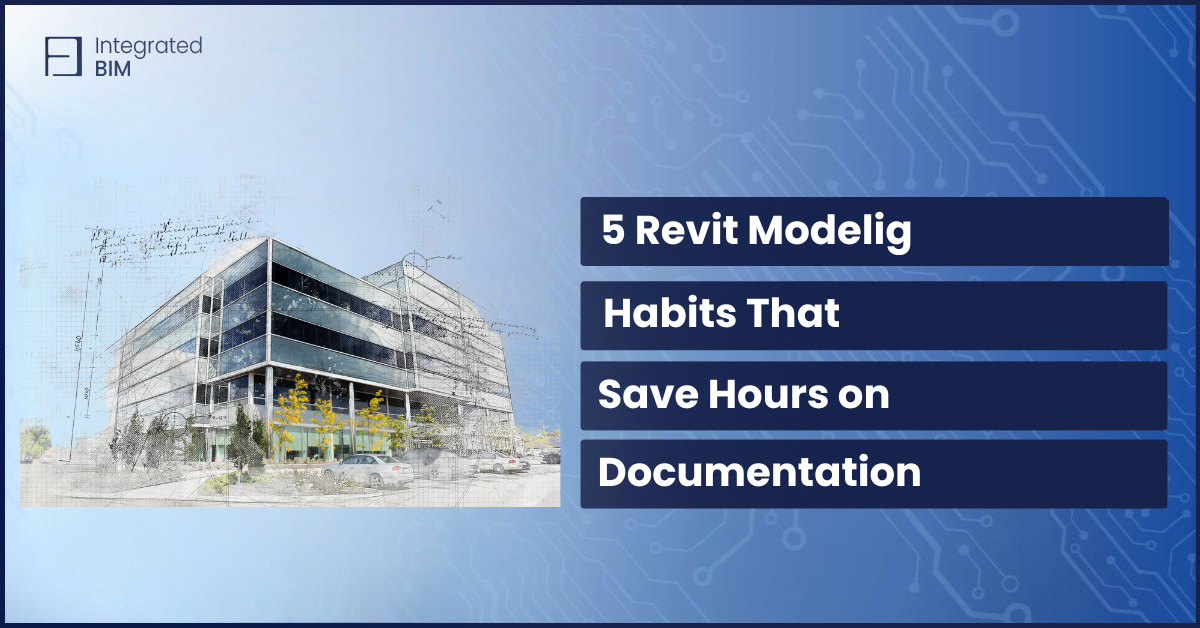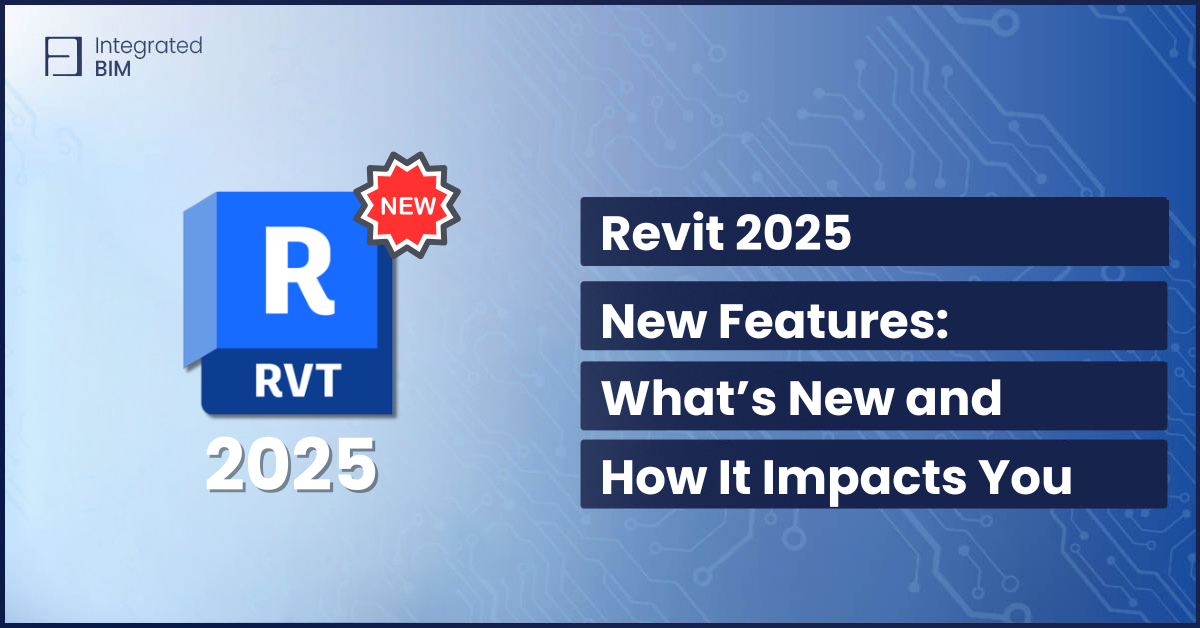Tight deadlines. Endless redlines. Last-minute changes. Sound familiar?
Most architects deal with time pressure during documentation.
Fortunately, much of that stress is avoidable. With better Revit modeling, your workflow becomes faster, cleaner, and far more predictable.
Here are five practical habits that will improve your model—and help you reclaim your time.
No plugins. No fluff. Just smarter ways to work.
Let`s get started!
1. Begin with Clear Revit Model Management
Poor model structure is one of the biggest time drains.
Before you start modeling, define the framework. Use project templates and set naming conventions. Create a shared folder structure for families, details, and views.
Clean model management leads to faster edits and better team coordination.
Revit modeling management tips:
- Use consistent naming conventions (e.g., A-WALL-INT for internal walls)
- Organize families by category and discipline.
- Create a startup view with key info like project phase, levels and revisions..
- Limit in-place families unless absolutely necessary.
This early discipline pays off when schedules, views, and exports are due.
2. Follow Solid BIM Modeling Habits
Revit isn’t just a drafting tool. It’s a data environment. That means how you model affects not just drawings, but also schedules, exports, and even facility use.
In Revit, every click affects more than just geometry—it impacts documentation, coordination, and even post-occupancy data.
BIM modeling habits for consistency
- Model elements at the right category and level.
- Use reference planes, not geometry edges, to constrain objects.
- Avoid over-modeling — use symbolic lines where appropriate.
- Don’t duplicate families unnecessarily; use types wisely.
Strong BIM modeling habits ensure your model behaves predictably across all phases. You won’t need to spend hours fixing broken tags or missing schedules later.
3. Improve Your Revit View Organization
A cluttered view list slows everyone down. Especially when it’s time to create sheets, export PDFs, or assign work.
Views should be purposeful and clearly labeled.
Revit view organization practices:
- Use view templates for consistency.
- Apply filters to isolate discipline-specific content.
- Prefix working views (e.g., “WKG_Section_LivingRoom”) to avoid sheet confusion.
- Archive or delete unused views before major deadlines.
Keeping views organized eliminates daily inefficiencies—and makes your final deliverables much easier to control.
4. Clean Your Model Before Exporting
IFC or DWG exports can fail if the model is bloated or inconsistent. This becomes a documentation bottleneck, especially in BIM-coordinated projects.
Don’t wait for export day to clean your model. Integrate these steps into your regular workflow, so your IFCs and DWGs are ready when you are.
Export-focused model management
- Purge unused families regularly.
- Check for missing levels or unhosted elements.
- Validate parameters needed for classification.
- Keep geometry simple for problematic elements (sweeps and blends often fail).
If you’re exporting for openBIM or clients using FM tools, this cleanup can save hours of revision later.
5. Build for Better Revit Productivity
Too often, architects design first and fix later. But modeling with documentation in mind is the real time-saver.
Make documentation-ready content your default.
Revit productivity boosters
- Use detail components and keynotes instead of 2D lines.
- Set up pre-linked detail views and callouts in your template.
- Create annotation families with built-in parameters for easy tagging.
- Preconfigure schedules with filters and formatting logic.
Small time investments up front lead to a huge boost in Revit productivity at the finish line.
Bonus Tip: Create a Modeling “Pre-Check” Routine
Before jumping into documentation, run a 5-minute model check:
- Are all elements correctly classified?
- Are levels consistent?
- Are views and sheets organized?
- Are schedules pulling the right data?
- Is your model free of warnings and unused content?
Do this weekly, not just at the end. It will transform how quickly and cleanly you can document.
Better Revit modeling is not about working harder. It’s about working smarter — reducing the manual steps that slow you down and create errors under pressure.
With just five habits, you can:
- Deliver cleaner documents
- Avoid weekend deadlines
- Improve collaboration
- And actually enjoy your Revit workflow again
The model is more than a design tool — it’s a platform for communication. And with the right habits, it becomes a time-saving asset, not a liability.
Which are 5 of the most common Revit problems and how to fix them, will find here.





